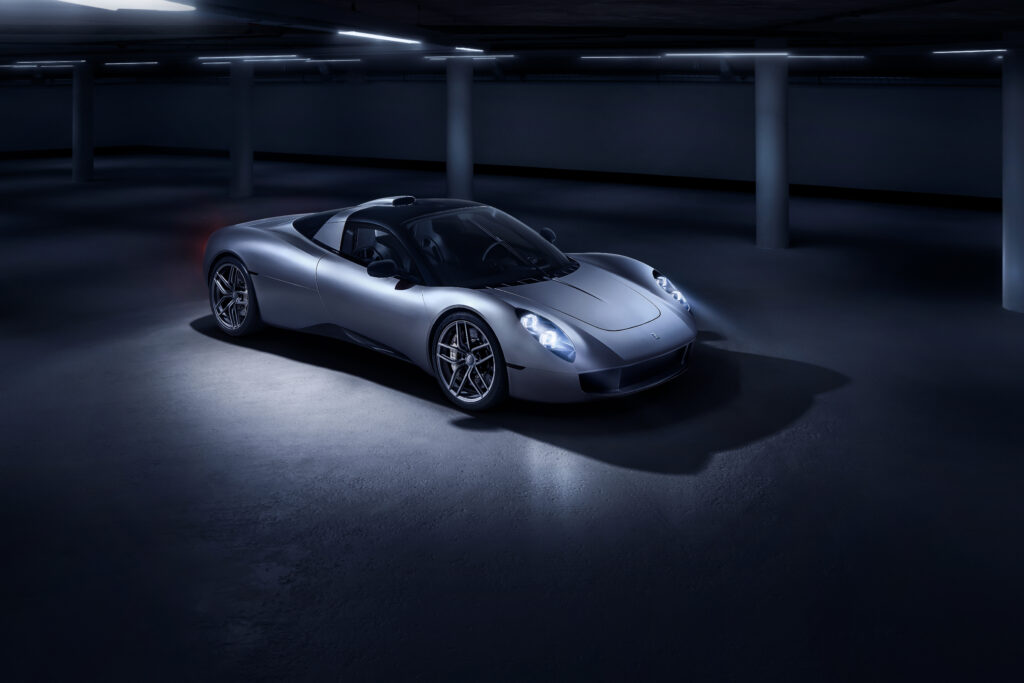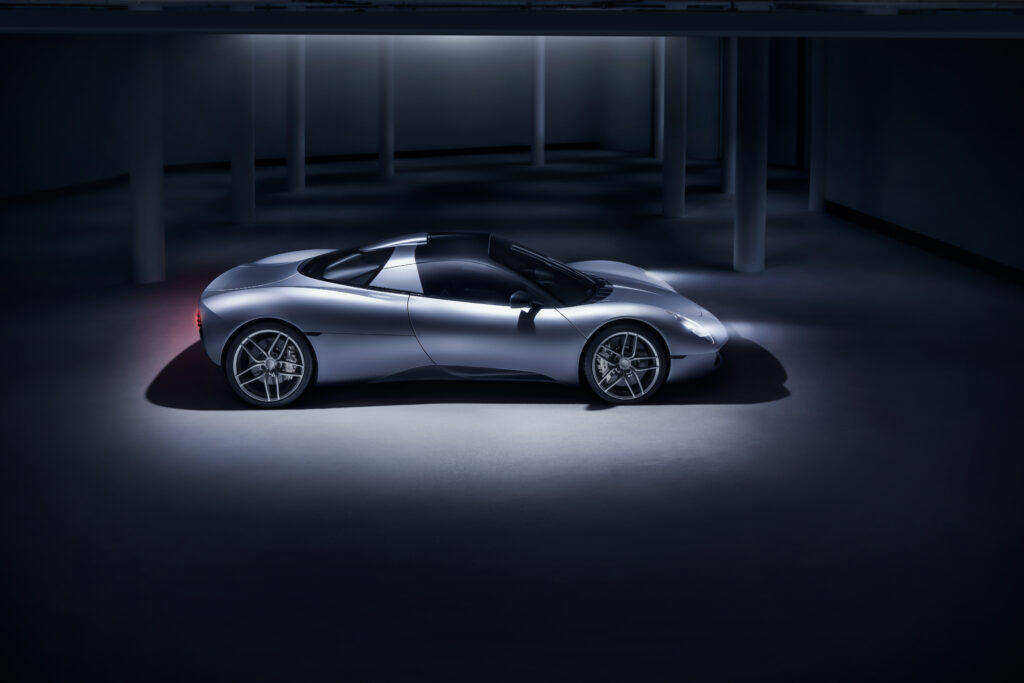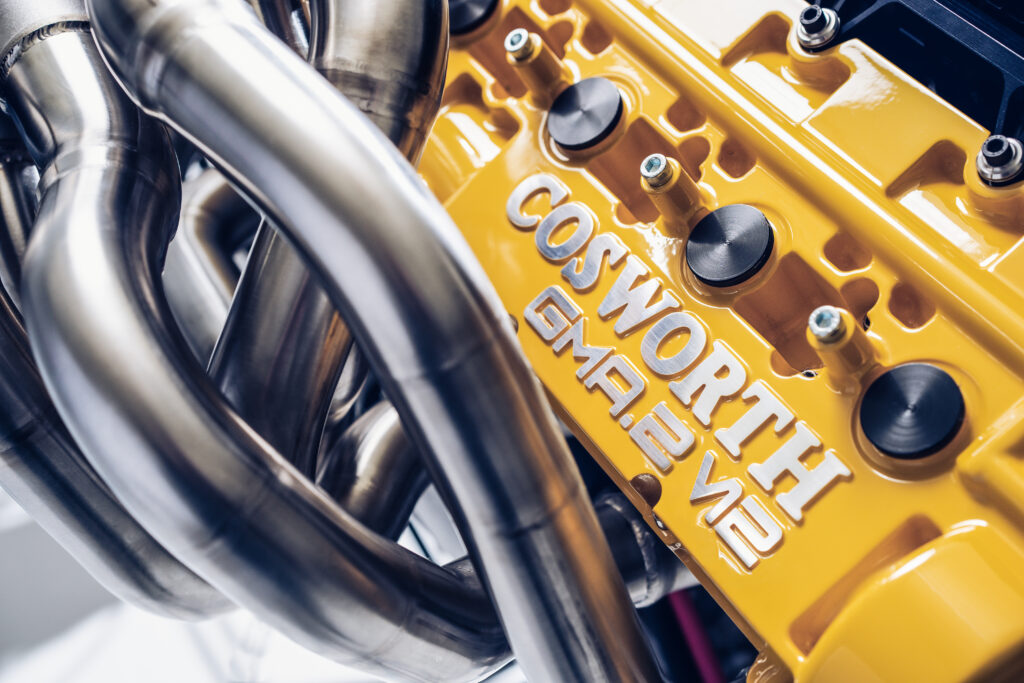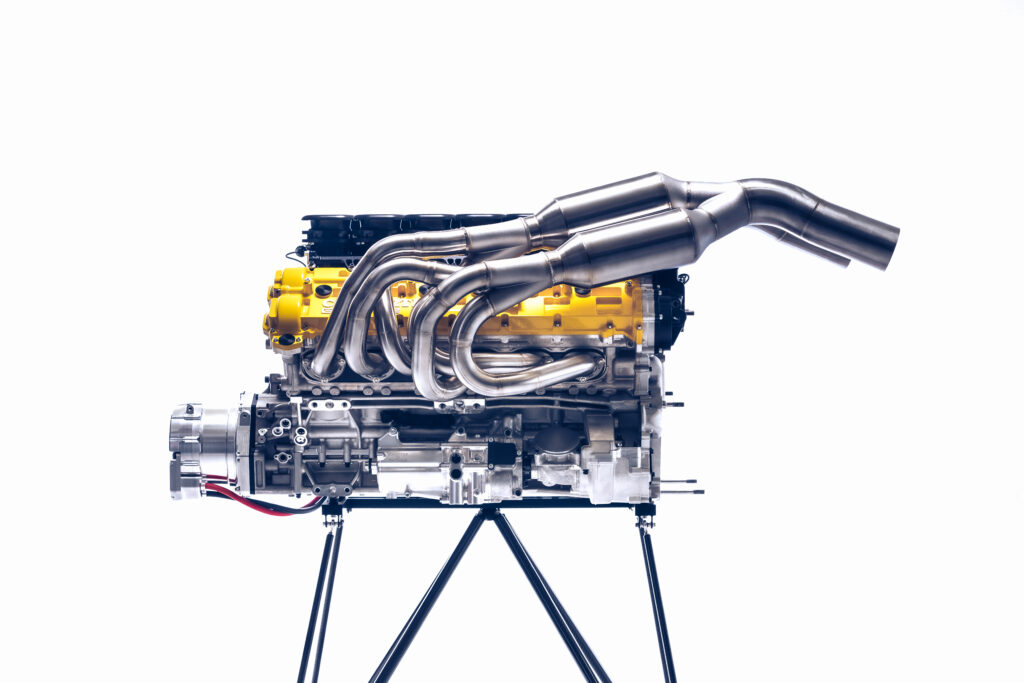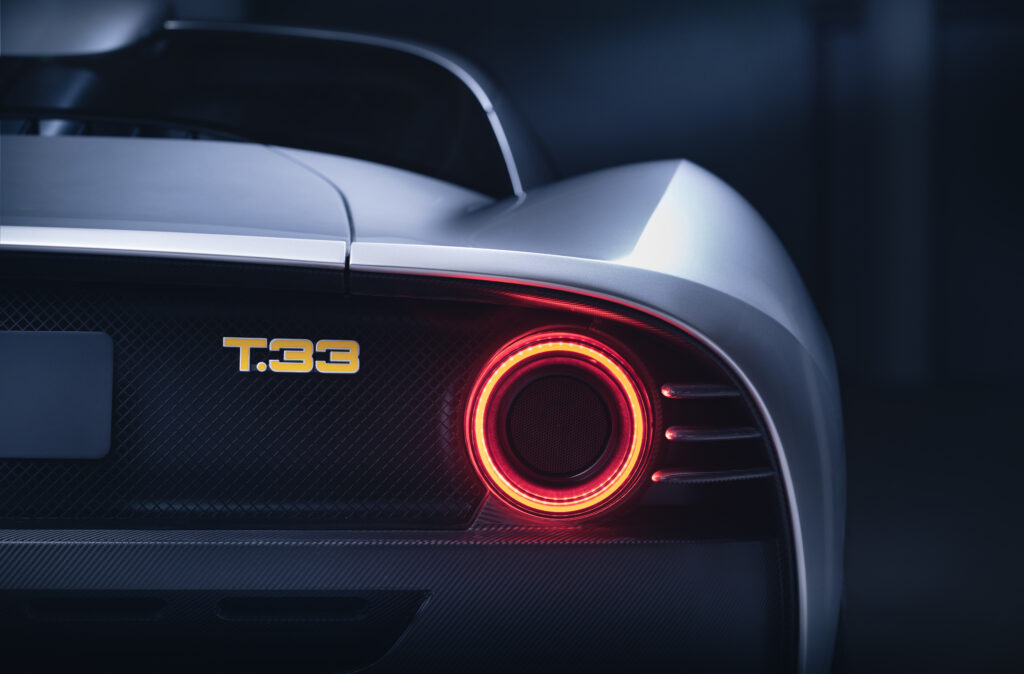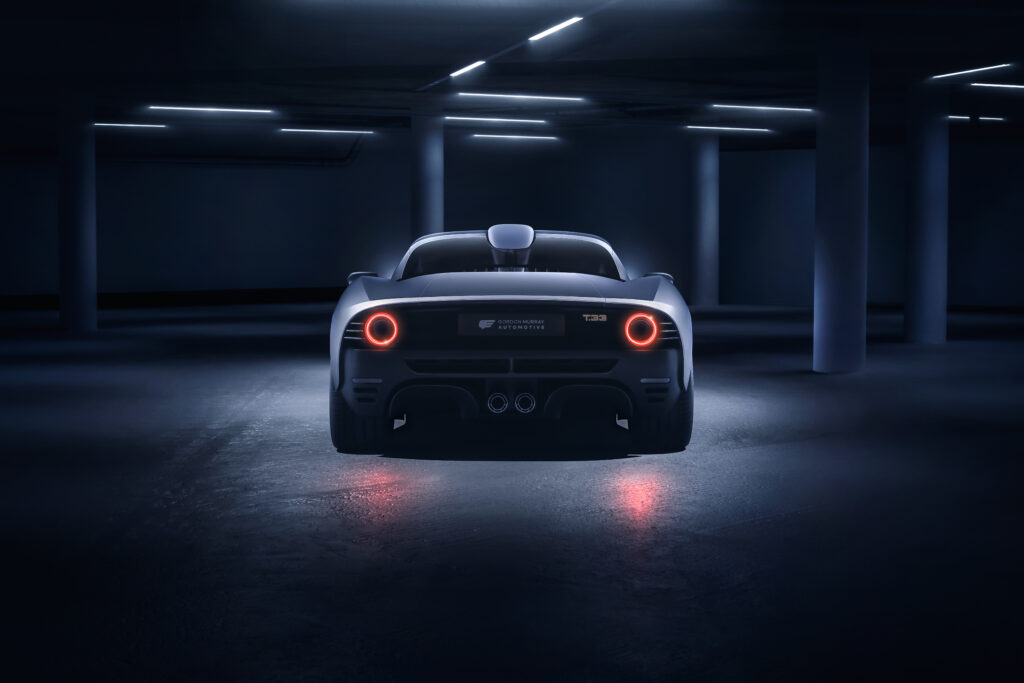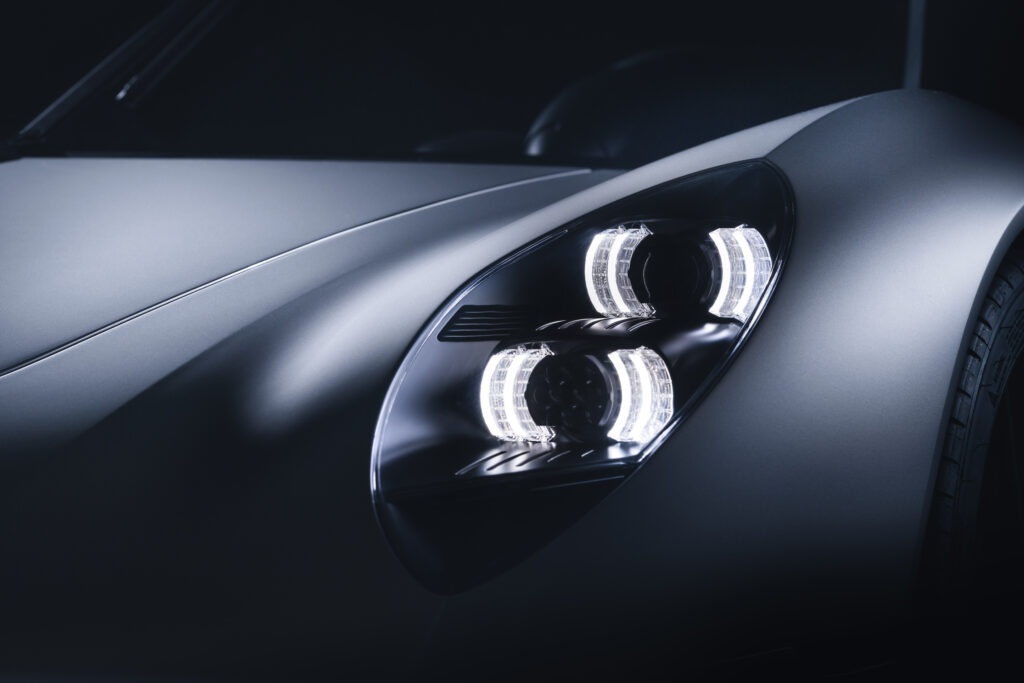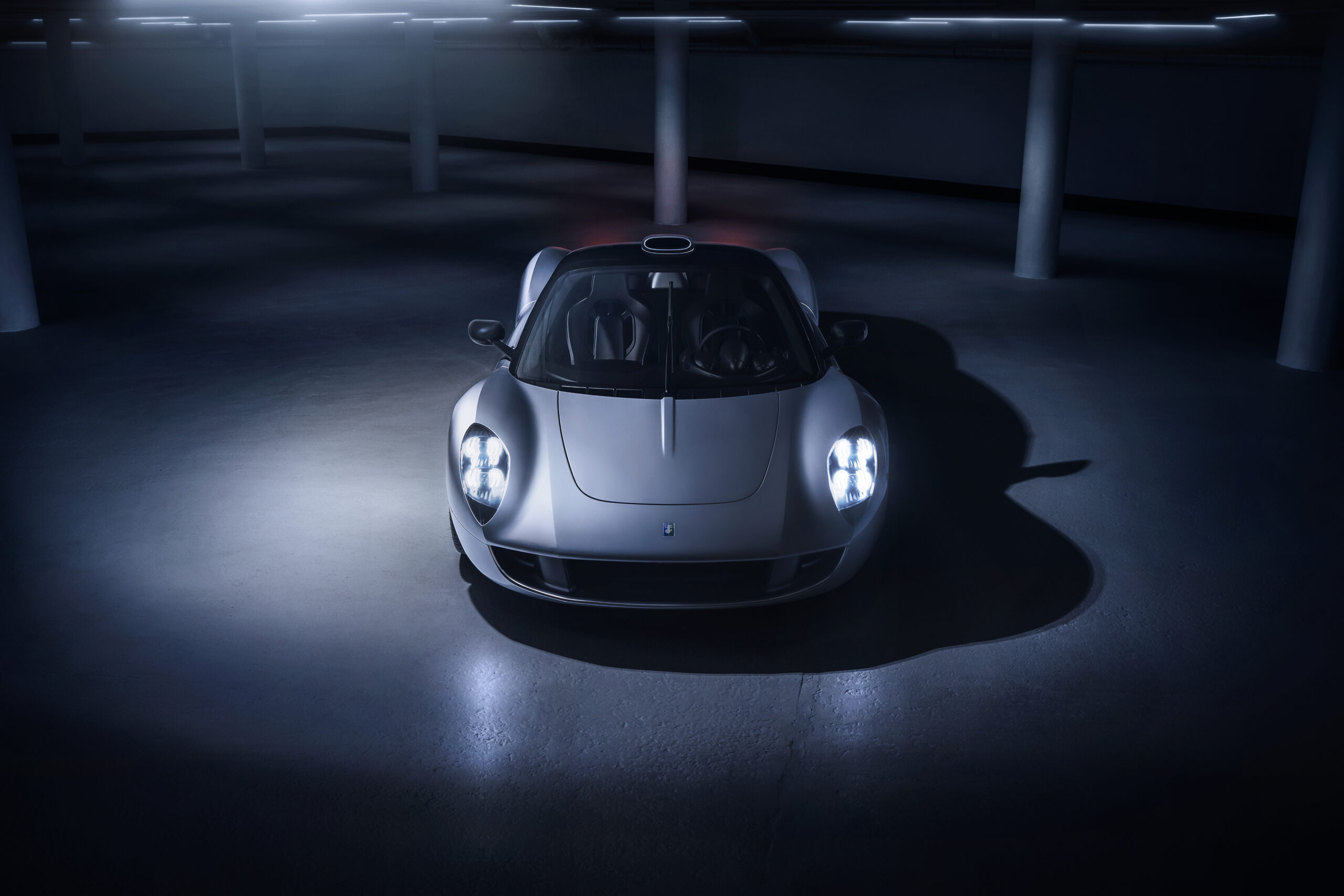T.33 Breaks Cover
Gordon Murray Automotive has unveiled the exciting all-new T.33. It is the second newly developed model from GMA and joins the T.50 and T.50s Niki Lauda in the line-up. The two-seat, mid-engined T.33 has been conceived, designed, and engineered without compromise to offer the ultimate blend of performance, comfort, on-road driving experience and everyday usability.
The T.33 will be powered by a specially reconfigured version of the T.50 3.9-litre V12, co-designed with Cosworth, and already regarded as the finest-ever twelve-cylinder road car engine. The beautifully proportioned, aerodynamically efficient, timeless design of the T.33 will be built around a newly developed carbon and aluminium superlight architecture. Its overall targeted weight is less than 1100kg.
ENGINE and TRANSMISSION: The T.33’s new GMA.2 V12 engine is based upon the exceptional building blocks of the greatest road-going V12 the world has ever seen. The 3.9-litre V12 that powers the GMA T.50 road car has been significantly re-configured to deliver performance that is even more accessible than the extreme T.50 V12.
CHASSIS BODY and SUSPENSION: The T.33 is built around a unique, superlight carbon fibre monocoque and iFrame® featuring cored carbon fibre panels. This solution delivers the perfect balance of torsional rigidity, and lightness, resulting in a car which is 300kg lighter than the average supercar. The extremely lightweight nature of the T.33’s construction ensures impressive agility on the road. Its strength and stiffness deliver exceptional occupant safety, with precision-engineered deformable areas. Occupant safety is further bolstered by a Formula One inspired ‘safety cell’.”
To deliver exemplary handling and ride comfort, GMA’s chassis engineers have developed an entirely new suspension package for the T.33. Lightweight double wishbones are deployed front and rear in conjunction with coil springs over aluminium alloy dampers. The front suspension configuration features an anti-roll bar and aluminium alloy uprights. At the rear of the chassis, aluminium alloy uprights and toe control links are deployed, along with an Inclined Axis Shear Mounting (IASM) system. The IASM system has the rear suspension mounted directly to the transmission casing with the torsional loads supported by the chassis and the entire powertrain mounted on anti-vibration bushes.
STEERING and BRAKES: The T.33 features a newly developed, bespoke rack and pinion, hydraulically assisted steering system calibrated to impart class-leading levels of feel and feedback.
The Brembo Carbon Ceramic Material (CCM) brake discs of the T.33 (370mm x 34mm front/340mm x 34mm rear) feature six-piston aluminium Monobloc alloy front callipers and
four-piston aluminium Monobloc alloy rear callipers. The braking system and aerodynamics combine to produce incredible deceleration.
WHEELS AND TIRES: The T.33 rides on unique and exceptionally light forged aluminium alloy 19-inch front and
20-inch rear wheels, weighing less than 7kg each. The wheels are wrapped in Michelin Pilot Sport 4 S tyres (235/35 R19 front, 295/30 R20 rear). The Michelin 4 S tyres provide superior all-round performance, with significantly lower replacement costs than bespoke tyres. They also offer further weight saving by being much smaller and narrower than those required by a conventional supercar due to the T.33’s low weight.
AERODYNAMICS: When it launched in 2020, the GMA T.50 rewrote the supercar rulebook with the most advanced and effective aerodynamics ever seen on a road car, enabled by its unique rear-mounted fan. Now, it is the turn of the equally innovative T.33 to create a new era of road car ground effect aerodynamics. This time there is no rear fan involved, but nevertheless, deploying numerous lessons learnt with the T.50 project Gordon Murray and his team have once more again raised the bar with the T.33’s Passive Boundary Layer Control (PBLC) system.
INTERIOR: To enter the cabin of many modern-day supercars is to enter a world of large touchscreens and endless sub menus that cause confusion and distraction. No touchscreens are found within the exquisitely, yet simply designed cabin of the T.33. As with the exterior, nothing is included unless it serves a purpose and if there was a danger it would dilute the driving experience, then it was simply deleted from the development programme. The car is even devoid of column stalks, and instead, the indicators are operated by thumb-buttons on the carbon fibre steering wheel’s horizontal spokes.
SOURCE GORDON MURRAY AUTOMOTIVE
SOURCE
